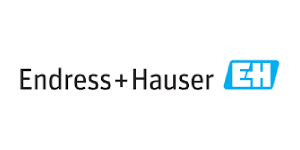Endress+Hauser Program Ups Drive to Entice More Women, Minorities Into STEM Careers

May 2, 2022
Buoyed by enthusiastic staff participation, the employee-led drive to increase participation of women at Endress+Hauser Canada is raising its sights – and targets – even higher. Outreach efforts, largely stymied by the Covid pandemic, are about to begin in earnest. Reaching young people through high school career fairs or college visits or inviting them to Endress+Hauser Canada facilities, sends a message to young women and minorities to consider STEM careers. It showcases the company, a world leader in measurement instrumentation for industrial process engineering, as an excellent launchpad for STEM careers. With pandemic restrictions easing, student groups will be able to visit the process training units (PTU) in Edmonton and Burlington, ON. PTU’s are full-scale pilot plants featuring some of the company’s advanced technologies. The Burlington PTU is in Endress+Hauser Canada’s brand new $28 million Customer Experience Centre.
“Outreach is both an opportunity and a challenge,” says Hailey Barton, chairperson of Endress+Hauser’s Women’s Integrated Network (W.I.N.) committee. “It requires a multi-stage approach. We want to reach young women at an early enough age to encourage them to focus their higher education choices on STEM fields. As they progress further, we want to introduce them to technical roles they might not have imagined themselves performing, And, of course, we want the best and brightest to think of Endress+Hauser when job hunting.”
Further to that point, Endress+Hauser Canada is in the process of recruiting for a new role in Burlington focused on training strategy and developing relationships with schools to launch their rotational engineering program, giving recent graduates and co-op students the opportunity to gain insight and experience by rotating through a variety of areas within a company over a 4 – 12month period.
The Canadian W.I.N. program is part of a global W.I.N. initiative by the Endress+Hauser Group to double the percentage of female employees worldwide by 2030 to 40%. At Endress+Hauser Canada, women already comprise 37% of employees and 41% of managers. From the outset, the Canadian W.I.N. committee, with strong senior management support, had more ambitious 2030 employment targets, and recently adjusted them even higher: to 47% female employees, 50% female managers, and a doubling of women in technical roles to 25%.
Given Canada’s demographic makeup, the Canadian program is also approaching those targets in a broader context of promoting diversity, equity, and inclusion within the company. That encompasses hiring and career quality issues like eliminating systemic biases. Initiatives to date have been largely internal. A mentorship program is helping employees gain professional development skills and embrace opportunities to advance themselves in the workplace. Human Resources have participated in training sessions for managers to eliminate unconscious biases and created hiring and recruitment materials with inclusive language and images.
Educational initiatives involving the entire 140-member Canadian work force have largely been digital throughout the pandemic. They include a daily email blast with resource material in support of Black History Month in February, a LinkedIn Learning Challenge with short informational pieces to encourage thought and discussion about bias and empowerment, and a one-minute “break-the-bias” video by employees prepared for International Women’s Day.

There is also a team-building benefit in such programming. For example, creation of a digital cookbook composed entirely of employee contributions helped bring staff together at a time when most were working from home and some might have felt isolated, says Barton. A key objective of the cookbook was to showcase the diverse ethnic backgrounds of people comprising Endress+Hauser Canada, with pictures of families eating the food and how it plays a role in their culture.
“The second part of the cookbook challenge was to ask employees to re-create the recipe of a colleague, something they had never eaten or even heard of before, so that ‘’they can then immerse themselves a bit in that culture, taste the spice and give us feedback on how that went,” says Barton. “This was just a fun initiative which had really amazing participation. While we weren’t in the office together, we found a way to get together through food and explore our different backgrounds.”



